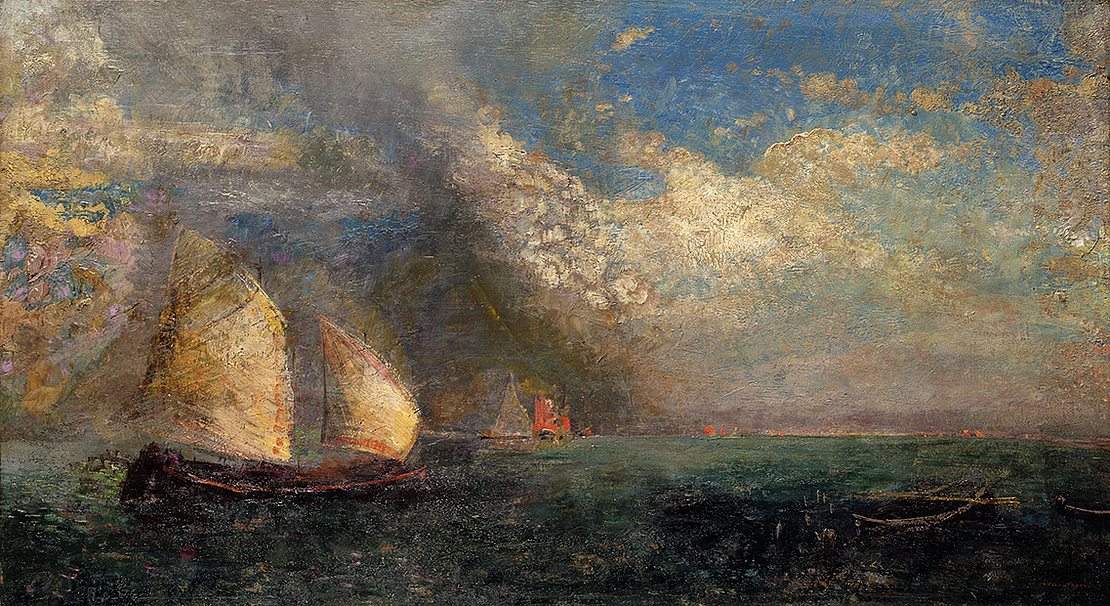The lagoon’s palette alternates between pitch black and dark green, while that of the endless sky shifts between blossoming violet and sugary light blue. On the dark horizon, there are small, luminous pearls of intense orange, signaling building on distant islands shining in the sunlight. Anyone who takes a little time to consider this picture and to immerse themselves in the exceptionally rich atmosphere of its air and water elements, who feels out the picture surface with their eyes piece by piece, from color tone to color tone, from brushstroke to brushstroke, receives an astonishing variety of sensory impressions. Here, the sky is clearing, the sun is breaking through, sinking down into the water of the lagoon; there, the gray pall is thickening, and rain is sliding across the multiply backlit firmament like a dull curtain. If our eyes glide low above the water, scents suddenly arise of salt and fish, algae, and the tar of the wooden boats. All the while, the fishing boat, like a ghost ship, passes silent over the water, with glowing sails. Nobody is visible on board; perhaps they are tired after taking the boat out at night, sunk in daydreams. Perhaps they are sleeping on the planks. As for us, where is it that we are standing? On another boat, or—as the rowing boats and wooden posts on the righthand edge of the picture suggest— on one of the many small islands in the Venetian lagoon, or perhaps just a narrow sandbank?
The question of which of the islands are seen in the background, flaming orange for a few moments and swallowed by the cloud shadows in the next, loses its meaning in the face of the breathtaking atmosphere, which Redon brings to life before us, unfolding it like a great stage. In a constant and ever-new changeability, light and dark, air and water diffuse into one another. In some moments, one of the two elements predominates; in other moments, the other does, in a constant, never concluded oscillation, a light-filled flickering state. Silently, the picture begins to speak. It tells of fishing and trapping, of days and night, heaven and earth, fortune and misfortune. This magnificent drama on the stage of the world between the clouds and the water is a powerful metaphor for the conditio humana, the condition of being human. Our states of mind and life circumstances shift and change like Redon’s painting. Nothing endures. In this picture, the simultaneous existence of swift momentary changes and slow, almost imperceptible changes of human destiny can be read in the elements. The notion of setting out into the endless distance in order to catch the fickle fish to secure existence (here today, there tomorrow, and nowhere the day after) reinforces this metaphorical drama of the elements.
Markus Stegmann in: «Herzkammer», Museum Langmatt 2020
